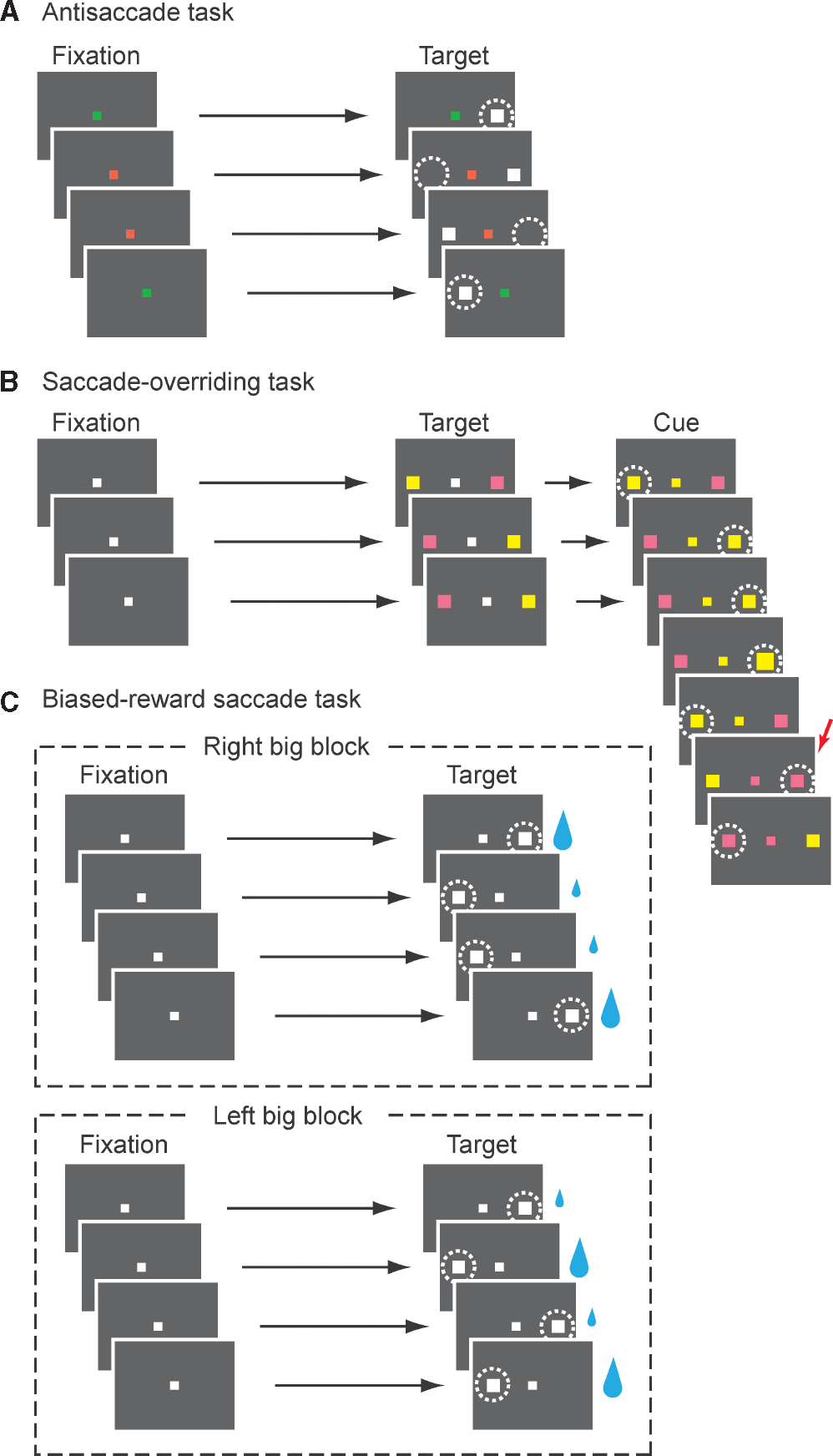Fig. 3.

Schematic illustration of three behavioral paradigms involving response switching. White dotted lines indicate the correct eye gaze location. (A) Antisaccade task used to examine switching from innate automaticity. Subjects are instructed to look toward (prosaccades) or away from (antisaccades) the peripheral stimulus by the fixation point color. Shown are examples in which the green fixation point instructs prosaccades and the red fixation point instructs antisaccades. The two types of trial are randomly interleaved. (B) Saccade-overriding task used to examine switching from habitual automaticity. The correct saccade target is indicated by the color of the central cue (yellow or pink). The central cue color remains unchanged during a block of trials and then is switched in the next block. Subjects cannot predict when the switching would occur. Shown are examples in which the ‘yellow block’ switches to the ‘pink block’ in the trial indicated by the red arrow. (C) BST used to examine switching from motivational automaticity. In the ‘right big’ block, the saccade to the right target is followed by a large reward, whereas the saccade to the left target is followed by a small reward. The position-reward contingency is reversed in the ‘left big’ block. Note that the position-reward contingency is fixed in each block, but the actual position of the target is unpredictable from trial to trial. Subjects have to perform a small-reward trial to proceed to the next trial.
